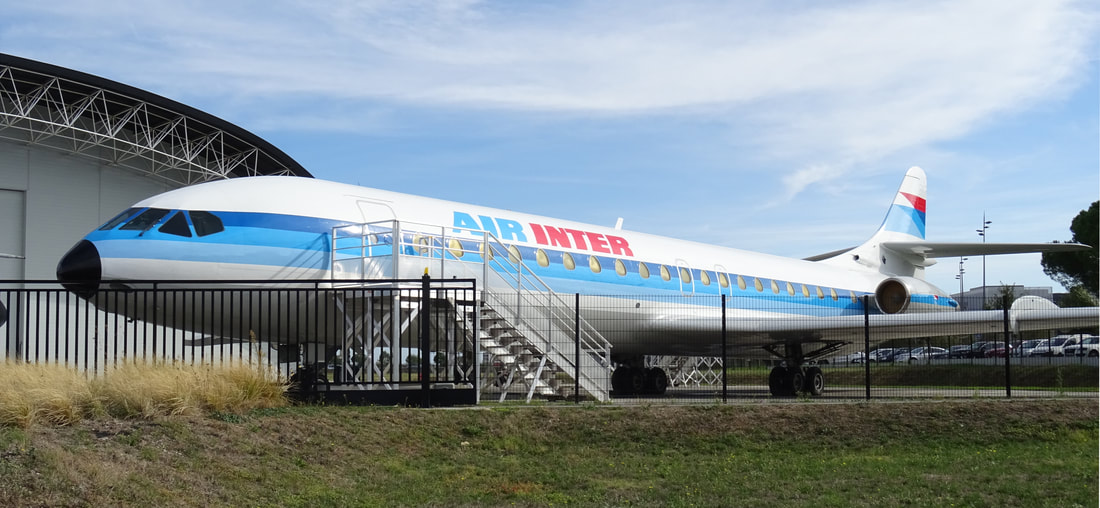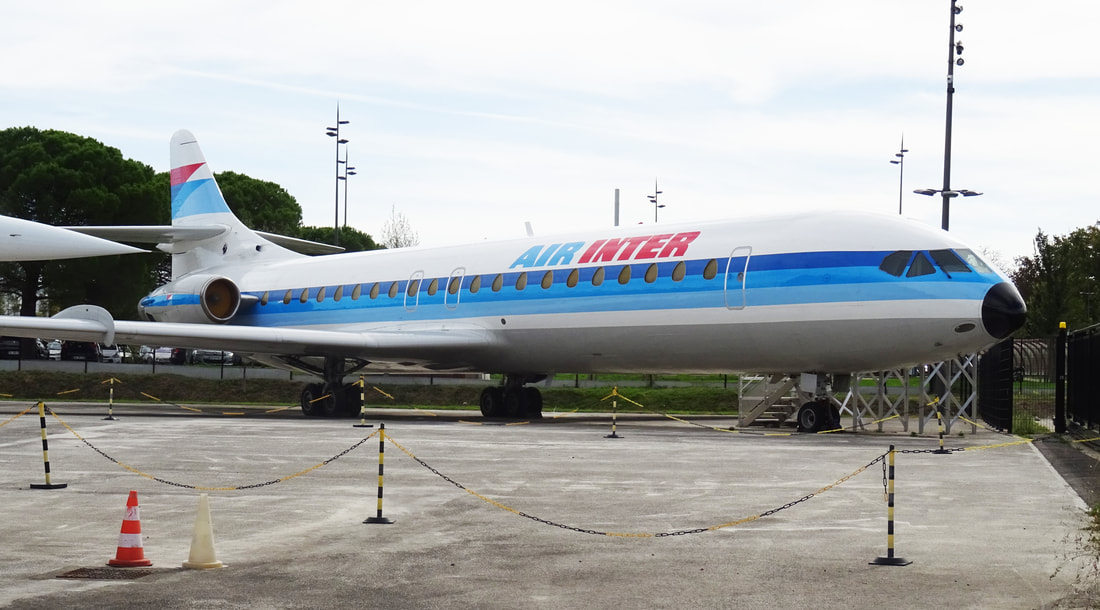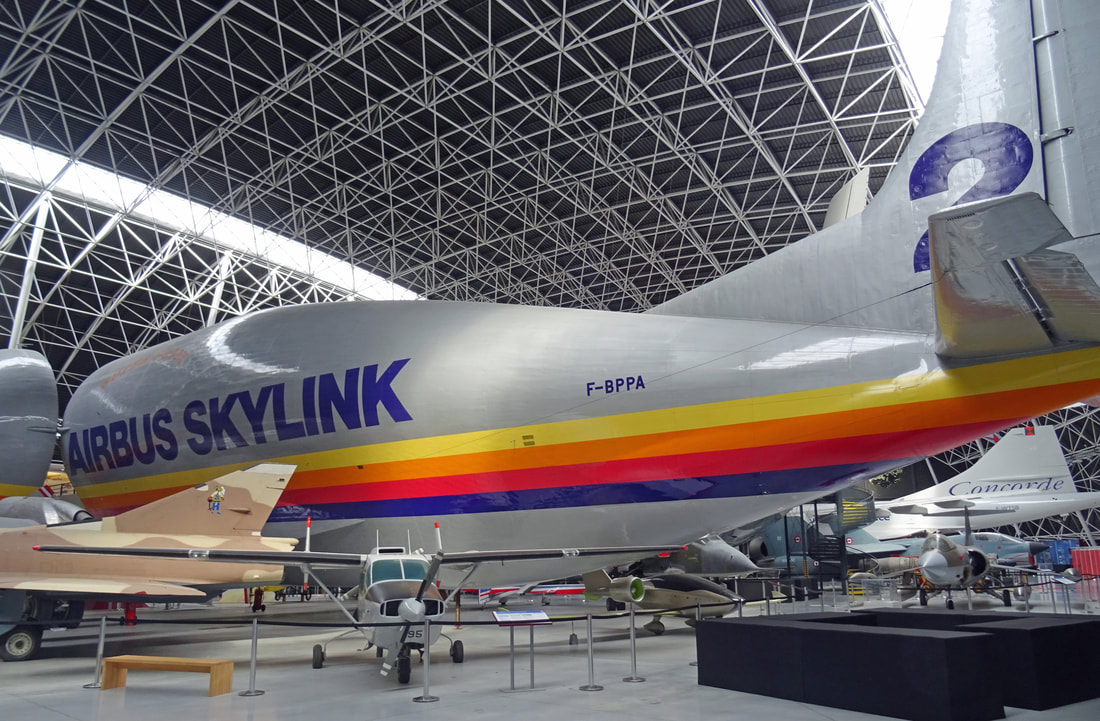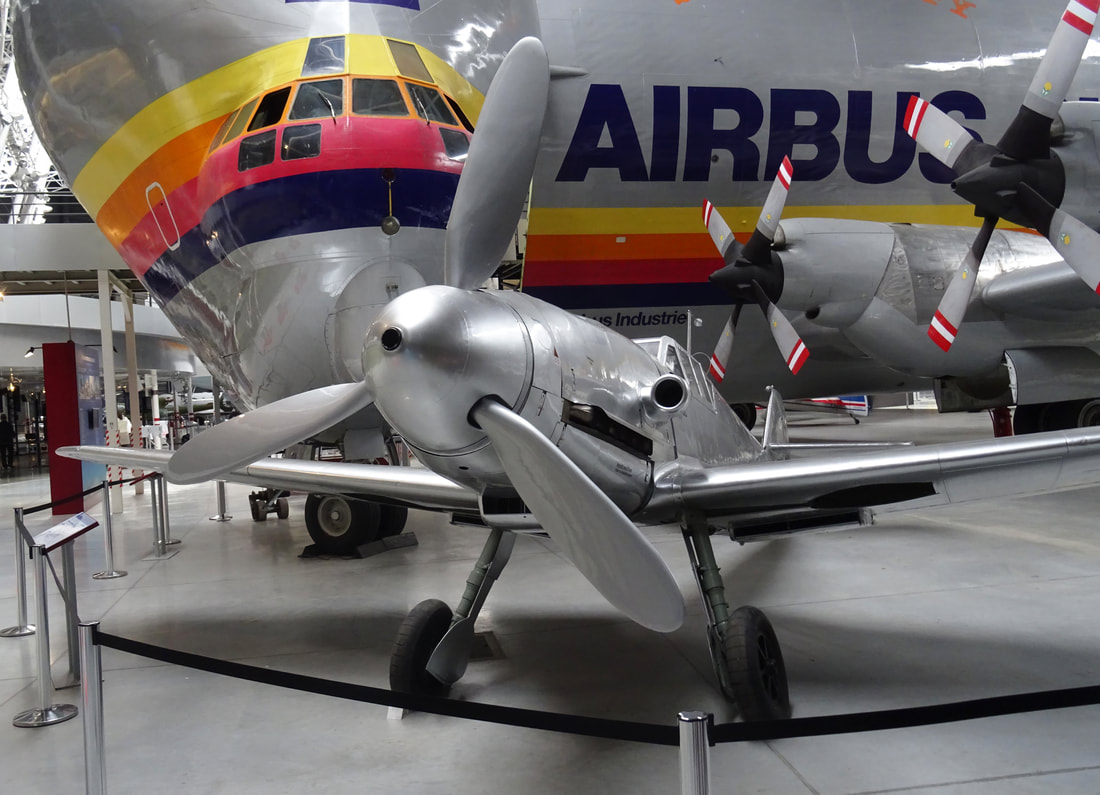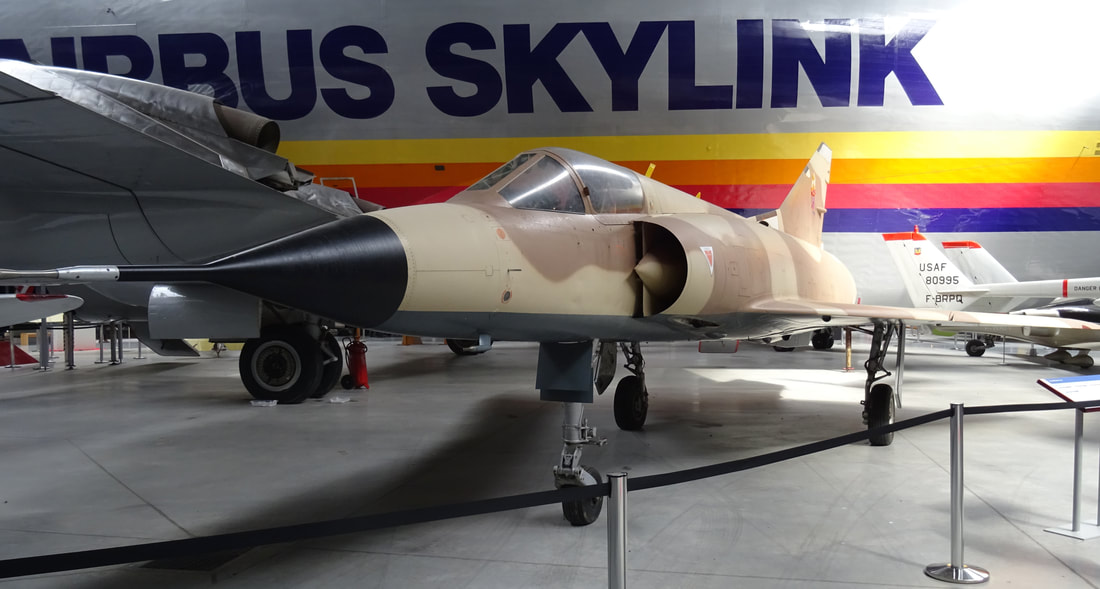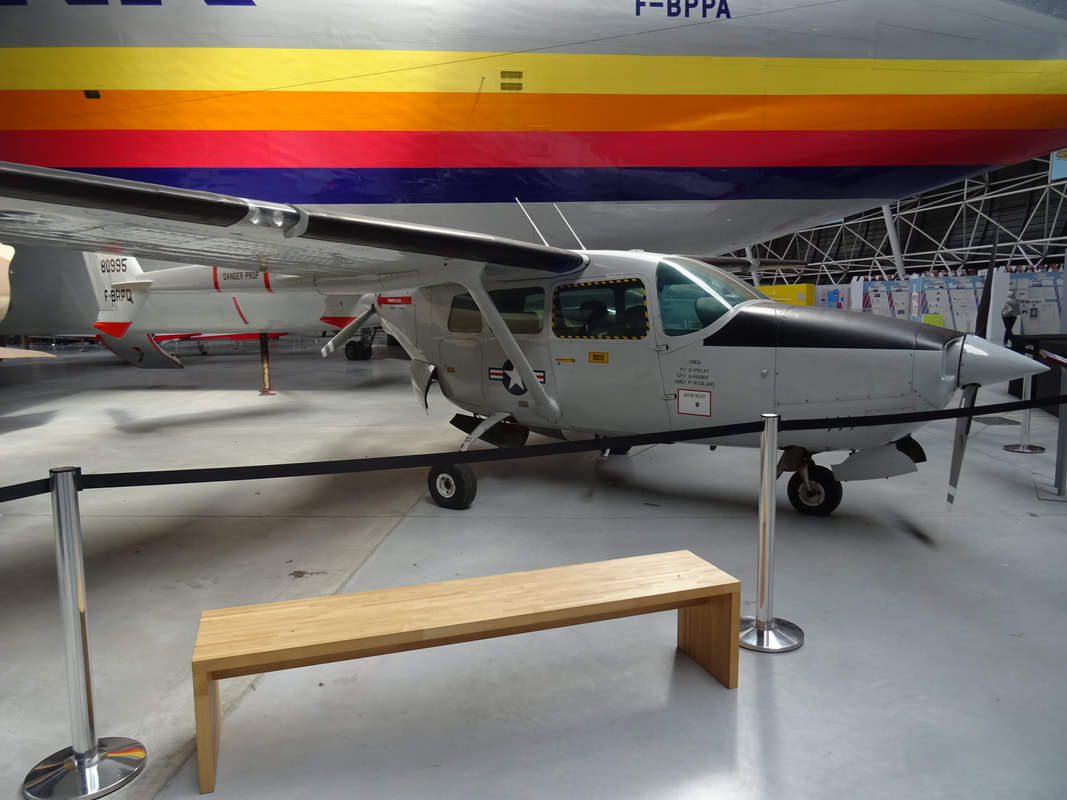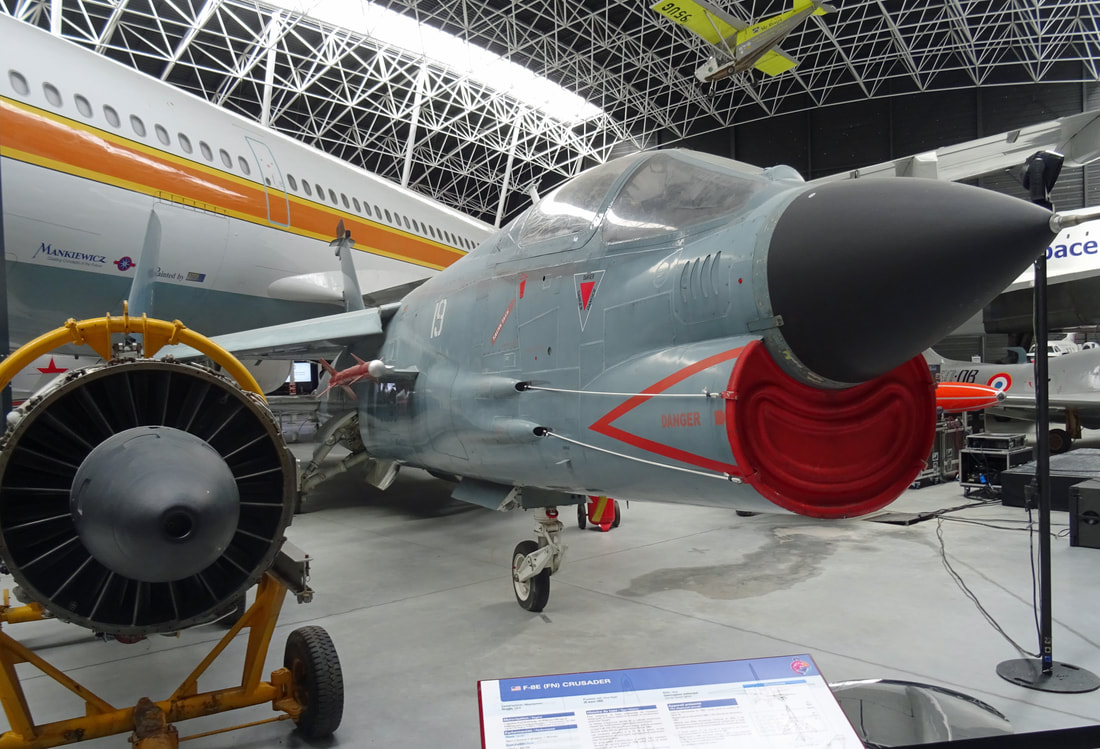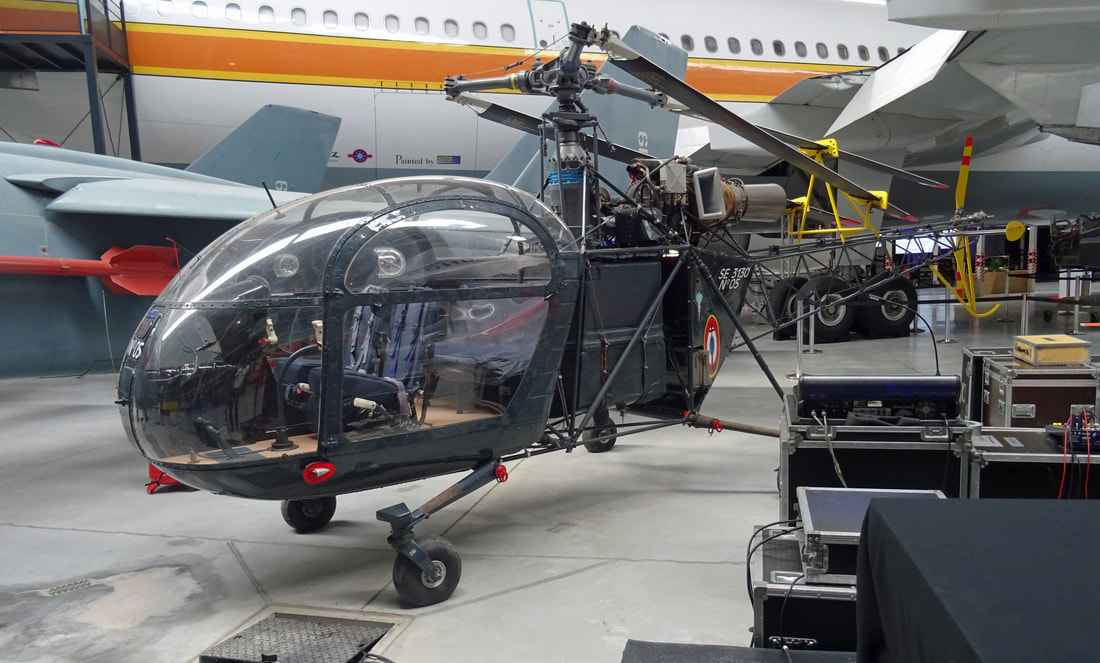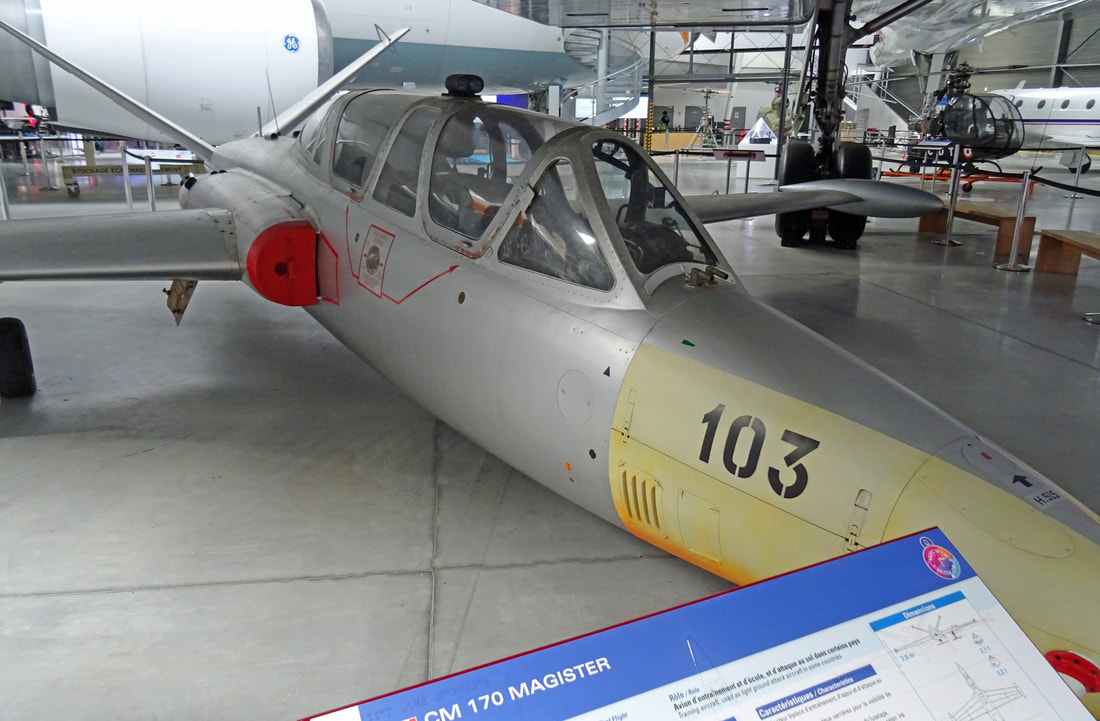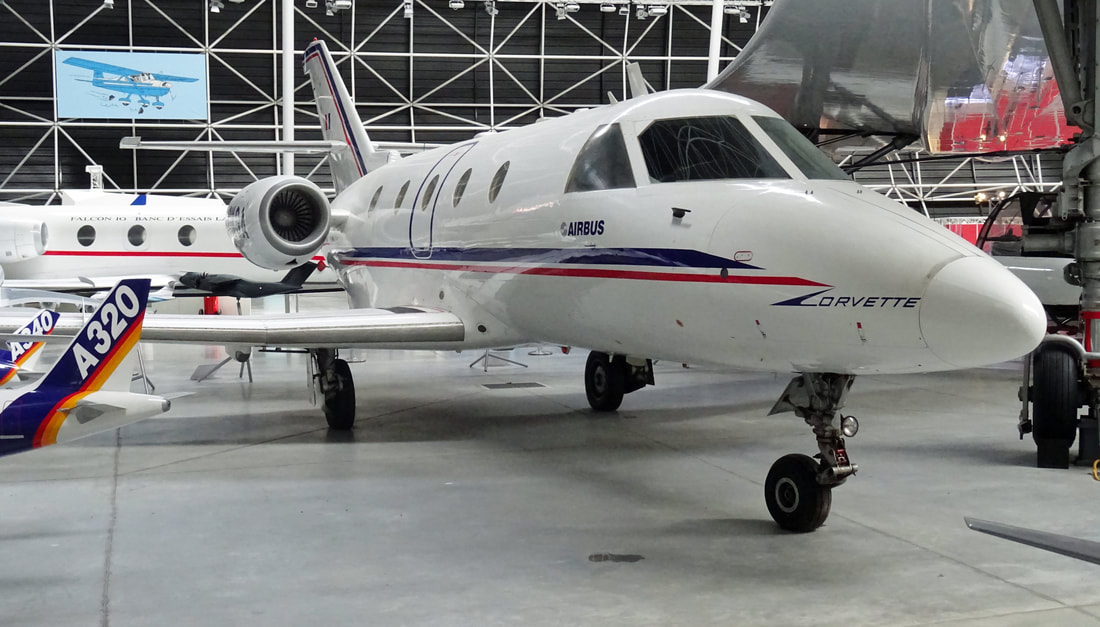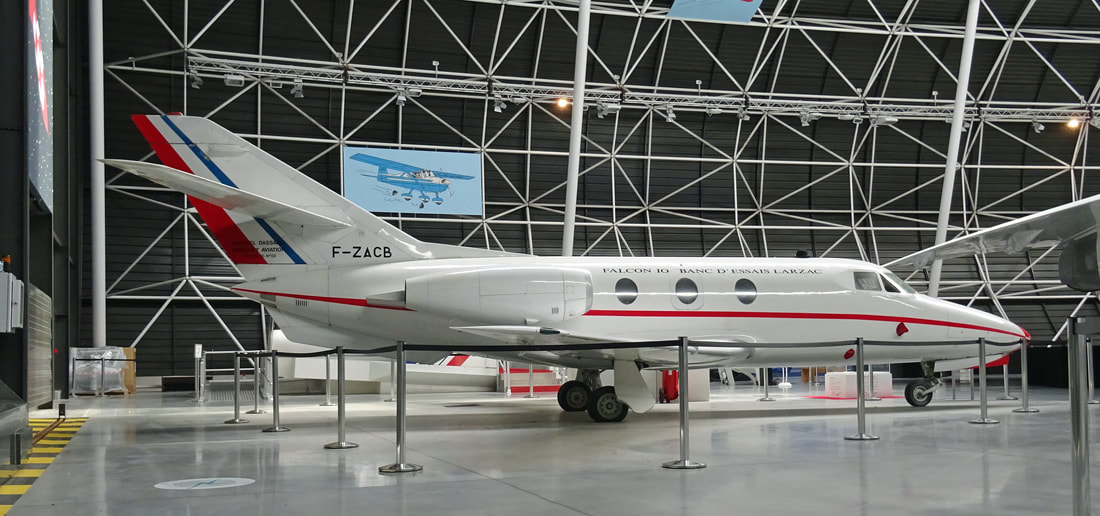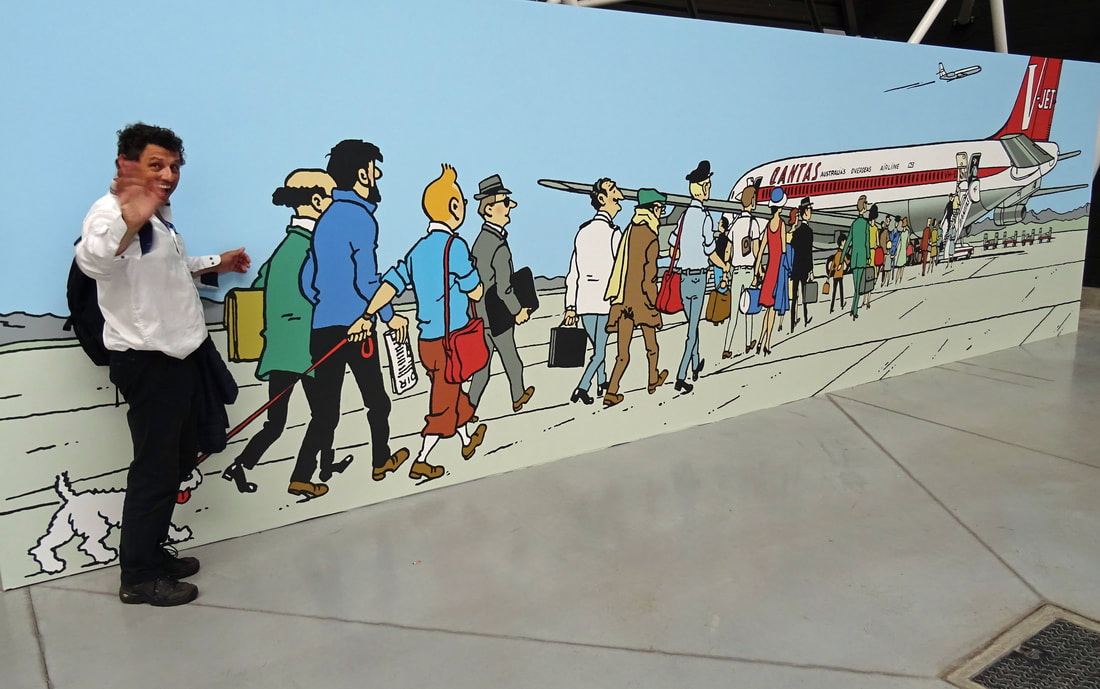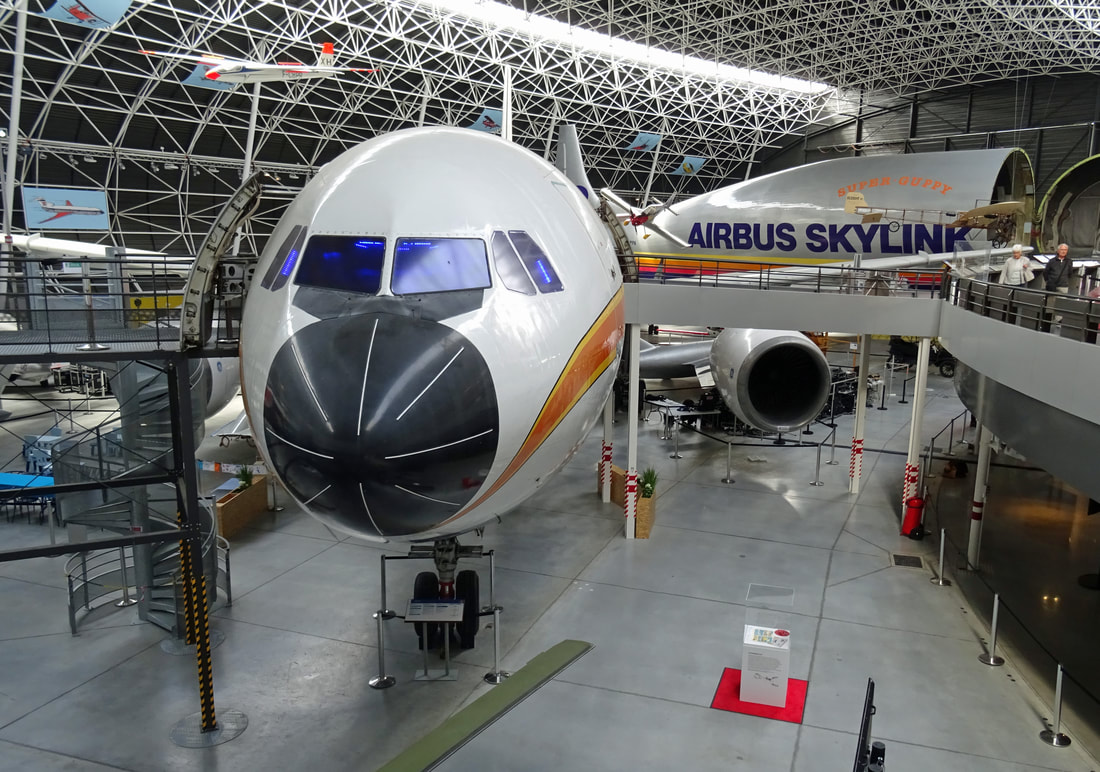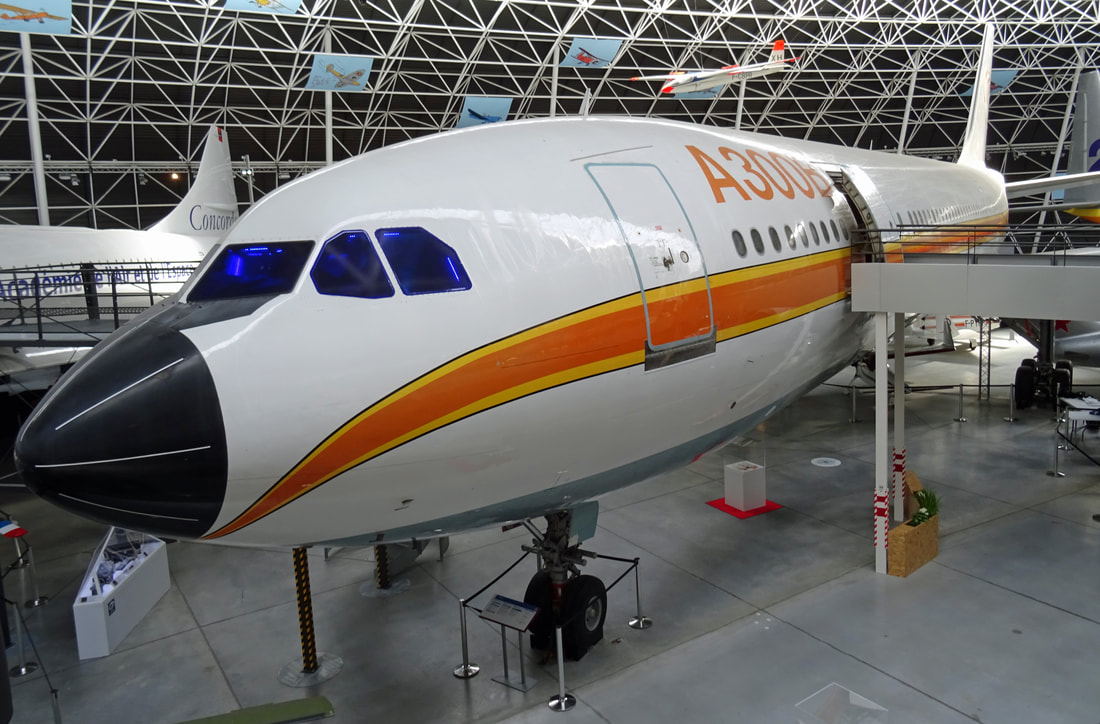Aeroscopia Toulouse
by Jan Koppen
Aeroscopia, the aviation museum, was built on the Pinot site, on the edge of the Aéroconstellation urban development zone, birthplace of the A380, itself directly connected to the airport and runways of Toulouse-Blagnac.
Aeroscopia was built just 300 metres from the awe-inspiring Lagardère plant (490 metres long and 46 metres high) and its rectilinear façades. The choice of this location especially enables the pooling of the museum’s ticketing service with those of the A380 and Airbus factory tours, significantly strengthening the site’s offer of industrial tourism and culture.
Aeroscopia was built just 300 metres from the awe-inspiring Lagardère plant (490 metres long and 46 metres high) and its rectilinear façades. The choice of this location especially enables the pooling of the museum’s ticketing service with those of the A380 and Airbus factory tours, significantly strengthening the site’s offer of industrial tourism and culture.
Air France Concorde 209 F-BVFC.
Concorde F-BVFC was manufactured in the summer of 1976s and delivered new to Air France in August 1976. This Rolls Royce SNECMA R100 powered Concorde served the French flag carrier faithfully for 3 year. In January 1979 she was co-operated by Braniff International and registration N94FC was used during domestic US flights (IAD/DFW/IAD). In June 1980 the deal was over and the Concorde resumed her work on Air France network. In 2003 her service life was over and she was preserved at Toulouse. In January 2015 she was donated to the Aeroscopia Musuem.
Air Inter SE-210-12 Caravelle F-BTOE.
Air Inter (Lignes Aériennes Intérieures) was a semi-public French domestic airline. Before its merger with Air France, the airline was headquartered in Paray-Vieille-Poste, Essonne. Earlier in its life, it was headquartered in the 1st arrondissement of Paris.
Air Inter was incorporated on 12 November 1954. It operated its first commercial flight between Paris and Strasbourg on 16 March 1958. However, it was 1960 when the airline started regular commercial services.
Air Inter was incorporated on 12 November 1954. It operated its first commercial flight between Paris and Strasbourg on 16 March 1958. However, it was 1960 when the airline started regular commercial services.
|
The company established its operational and engineering base at Paris-Orly Airport, where its flights were concentrated at Orly Ouest, Orly Airport's West Terminal.
Air Inter was founded as a semi-public entity to provide efficient domestic air transport at the lowest cost. Its financial backers included French public and private sector transport businesses in road, rail and air transport, as well as banks. Air France and Société Nationale des Chemins de Fer Français (SNCF), the state railway company, were Air Inter's two largest public sector shareholders.
On 12 January 1990 Air Inter, with UTA and Air France, became part of an enlarged Air France group, which in turn became a subsidiary of Groupe Air France. Air Inter changed to Air Inter Europe following a merger with Air France and UTA. On 1 April 1997, it was absorbed into Air France. On that day, the firm ceased to exist as a legal entity within Groupe Air France. |
|
Wing fences, also known as boundary layer fences and potential fences are fixed aerodynamic devices attached to aircraft wings. Often seen on swept-wing aircraft, wing fences are flat plates fixed to the upper surfaces parallel to the airflow, typically wrapping around the leading edge. By obstructing span-wise airflow along the wing, they prevent the entire wing from stalling at once, as opposed to wingtip devices, which increase aerodynamic efficiency by seeking to recover wing vortex energy.
|
The Caravelle 12 (Super Caravelle) was the last version of the Caravelle to appear, first flying on 12 March 1971. The Series 12 was a 10B with a noticeably longer fuselage, stretched by 3.2 m (10 ft 6 in), and a newer up-rated version of the JT8D engines. This allowed for up to 140 passengers over a reduced range.
The Caravelle 12 was aimed primarily at the charter market, produced to 12 examples starting in 1972. By this point Concorde was in production; this design was originally known in France as Sud Aviation Super-Caravelle. The Caravelle 12 was often also referred to by this name. The launch customer for the Series 12 was Sterling Airways with seven delivered, while the remaining five went to Air Inter. Series 12’s flew in Europe until October 1996 and in Africa until more recently.
Note; - The series-12 is missing the dorsal ridge housed avionics and HF antennas.
The Caravelle 12 was aimed primarily at the charter market, produced to 12 examples starting in 1972. By this point Concorde was in production; this design was originally known in France as Sud Aviation Super-Caravelle. The Caravelle 12 was often also referred to by this name. The launch customer for the Series 12 was Sterling Airways with seven delivered, while the remaining five went to Air Inter. Series 12’s flew in Europe until October 1996 and in Africa until more recently.
Note; - The series-12 is missing the dorsal ridge housed avionics and HF antennas.
Airbus A400M-180 F-WWMT (c/n. 01).
The Airbus A400M Atlas is a versatile military transport aircraft designed by Airbus Military to fulfil the present requirements of air forces.
Designed to renew air force transport capacity, the A400M satisfies new operational requirements. With the latest technology, this aircraft can carry out both tactical and strategic missions. It entered service with the French Air Force in 2013.
Aircraft msn. 01, which is displayed at Aeroscopia, was nicknamed 'Grizzly One' by the engineers and crews of the test flight center due to her size, and performed the maiden flight of the type in December 2009. Heavily loaded with test instrumentation, this airframe was used to explore the flight envelope and was notably used for extreme testing, including stall tests. She was also tested at speeds far in excess of the normal maximum. The data gathered was then used to develop the simulators that will be used to qualify crews on the type. After four years of testing and 475 flights, she was decommissioned to be displayed in the museum.
Designed to renew air force transport capacity, the A400M satisfies new operational requirements. With the latest technology, this aircraft can carry out both tactical and strategic missions. It entered service with the French Air Force in 2013.
Aircraft msn. 01, which is displayed at Aeroscopia, was nicknamed 'Grizzly One' by the engineers and crews of the test flight center due to her size, and performed the maiden flight of the type in December 2009. Heavily loaded with test instrumentation, this airframe was used to explore the flight envelope and was notably used for extreme testing, including stall tests. She was also tested at speeds far in excess of the normal maximum. The data gathered was then used to develop the simulators that will be used to qualify crews on the type. After four years of testing and 475 flights, she was decommissioned to be displayed in the museum.
|
The Europrop International TP400-D6 is an 11,000 shp (8,200 kW) powerplant, developed and produced by Europrop International for the Airbus A400M Atlas military transport aircraft. The TP400 is the most powerful single-rotation turboprop; only the contra-rotating Kuznetsov NK-12 is larger.
|
Airbus Skylink Aero Spacelines Guppy 337SGT-201F F-BPPA/2.
The museum’s Super Guppy is the second aircraft, first flown on the 24th of August 1972 and delivered to Airbus in 1973. It made its last of 6261 flights (totalling 14,110 flight hours) on the 15th of March 1996 and joined our collection immediately afterwards. Its electrical and hydraulic systems are still operational.
|
The origins of the Super Guppy go back to the Second World War B-29 Superfortress. Based on this aircraft, Boeing developed the Boeing 377 Stratocruiser and C-97 Transport aircraft.
In the early 1960s, the space race was going on at full speed, and NASA desperately searched for a means to transport rocket parts from the American West Coast where they were manufactured to Florida. Aero Spacelines proposed a transport aircraft based on the Boeing 377 / C-97 modified with a bulbous fuselage capable of loading oversized cargo. The solution was accepted, and the first Guppy flew on the 19th of September 1962. |
Airbus in Europe would soon face a similar problem: With the sections of the A300 under development being manufactured all around Europe, a search was on for a way to transport them to the final assembly line located in Toulouse at a reasonable cost. Land transport from the harbour of Bordeaux had revealed itself impractical when it took one month (and dozens of cut trees, as well as many disconnected electricity cables) to bring the parts for the prototype A300 to Toulouse. After some heated discussion, it was therefore decided to procure two Super Guppies in the US that entered service with Airbus in 1971 and 1973, respectively. From then until 1996, the Super Guppy fleet, which had meanwhile grown to four aircraft, flew Airbus parts, as well as Concorde and Dassault Mercure parts, to the final assembly lines.
Messerschmitt BF.109-G2.
|
The Messerschmitt Bf 109 is a German World War II fighter aircraft that was, along with the Focke-Wulf Fw 190, the backbone of the Luftwaffe's fighter force. The Bf 109 first saw operational service in 1937 during the Spanish Civil War and was still in service at the dawn of the jet age at the end of World War II in 1945.
It was one of the most advanced fighters of the era, including such features as all-metal monocoque construction, a closed canopy, and retractable landing gear. It was powered by a liquid-cooled, inverted-V12 aero engine. From the end of 1941, the Bf 109 was steadily being supplemented by the Focke-Wulf Fw 190. It was commonly called the Me 109, most often by Allied aircrew and among the German aces, even though this was not the official German designation. |
Mirage IIIC.
The museum’s Mirage IIIC, is currently painted as “n° 27” in a desert camouflage scheme this aircraft wore while based in Djibouti. It has been restored in the 1990s and repainted in 2010/2011. This plane is now displayed in the Aeroscopia Museum.
In the early 1950s, the French Air Force started looking for a small interceptor capable of supersonic flight and powered by a jet engine in combination with an additional rocket engine. Three projects have been proposed: the SNCASO SO.6020 Trident, the SNCASE SE.212 Durandal and the Dassault Mirage. This one first flown on the 26th of June 1955.
The prototype was heavily modified and improved and designated Mirage III, the first aircraft making its maiden flight on the 17th of November 1956. The Mirage III was the first aircraft of the Armée de l’Air capable of flying at Mach 2 and attaining the stratosphere. It was also in a Mirage III that Jacqueline Auriol became the first woman in History to fly at Mach 2.
Then 100 Mirages III C were order by the French air force of them 5 kept by Dassault as development aircraft for other variants. In France 10 Squadrons were equipped with this aircraft. The last one was retired at Djibouti 1988 but many remain in service with other air forces around the world.
The type became a huge export success, too, with a total of 1830 Mirage III built (in all variants including Mirage V & 50), and used by the air forces of Argentina, South Africa, and Israel where they distinguished themselves as a particularly successful fighter between 1962 and 1982.
The prototype was heavily modified and improved and designated Mirage III, the first aircraft making its maiden flight on the 17th of November 1956. The Mirage III was the first aircraft of the Armée de l’Air capable of flying at Mach 2 and attaining the stratosphere. It was also in a Mirage III that Jacqueline Auriol became the first woman in History to fly at Mach 2.
Then 100 Mirages III C were order by the French air force of them 5 kept by Dassault as development aircraft for other variants. In France 10 Squadrons were equipped with this aircraft. The last one was retired at Djibouti 1988 but many remain in service with other air forces around the world.
The type became a huge export success, too, with a total of 1830 Mirage III built (in all variants including Mirage V & 50), and used by the air forces of Argentina, South Africa, and Israel where they distinguished themselves as a particularly successful fighter between 1962 and 1982.
Nord N.1101 F-BBCM (c/n. 008).
The Nord 1100 Noralpha was a French-built and re-engined Messerschmitt Bf.108 produced by Nord Aviation.
|
Construction of the Messerschmitt Bf 108 was build by the Société Nationale de Constructions Aéronautiques du Nord (usually known simply as Nord) at Les Mureaux, to the West of Paris, in occupied France in 1942.
The Noralpha was a low-wing cantilever monoplane with a braced horizontal tail surface and single rudder. It had a retractable tricycle landing gear. The engine was nose-mounted and it had an enclosed cabin with side-by-side seating for two and room behind for a further two passengers. Nord built 200 production examples of the Noralpha and these served as communications aircraft with the French Air Force and French Navy. Later, many examples were civilianised. The final Air Force Noralphas were replaced in service with the Centre d'essais en vol (CEV) at Bretigny-sur-Orge during 1974-75, whilst a few naval examples continued for a further brief period! |
US Army Cessna T.337D Skymaster F-BRPQ/80995.
The museum’s aircraft is a Cessna 337D, serial number 0995. Before joining our collection, it was flown by one of our members who painted it in the colours of a US Air Force O-2A surveillance aircraft. From 2009 to 2014, it served as an instructional airframe for the training of future aircraft mechanics at the Lycée Saint-Exupéry.
|
The Cessna 337 is based on the Cessna 336 Skymaster that first flew on the 28th of February, 1960. Capable of transporting 4 to 6 passengers, this unusual aircraft is powered by two Continental IO- 360-A engines of 210hp in tandem configuration, also called Push-Pull as one propeller is pushing the aircraft while the second is pulling it.
In 1967 the US Air Force ordered a total of 501 O-2As, the military designation of the type. They were used as Forward Air Control aircraft in Vietnam. Another 31 Super Skymasters, designated O-2B were equipped with loudspeakers and equipment for leaflet-dropping to be used for psychological operations. The US Air Force lost a total of 178 of these aircraft in Vietnam. In France, the type was licence-built by Reims Aviation. The first French-built aircraft took to the sky on the 1st of September, 1969, followed by 170 aircraft of various versions including the military FTB-337G, equipped with an IO-360-D engine of 225hp and designed for support, patrol and rescue missions. |
Sepcat Jaguar A (c/n. 004).
The aircraft displayed was stored at the Centre d’Essais en Vol in Toulouse until it was heavily damaged by a storm in 2009. The museum’s staff took over the aircraft and replaced the fin, rudder and cockpit hood.
The Jaguar is the fruit of a Franco-British cooperation. As both countries were looking for a light ground attack and training aircraft in the early 1960s, they decided to join forces and created the “Société Européenne de Prodution de l’avion d’Ecole de Combat et d’Appui Tactique”, with Breguet as the French shareholder and the British Aircraft Corporation as its British counterpart.
The prototype first flew on the 8th of September 1968. Some 500 serial aircraft were built and used until the early 2000s.
The aircraft was armed with 2 30mm cannon and could carry a variety of ordnance for ground attack, and even air-to-air combat on five hard points. Both France (200 aircraft) and Britain (203 aircraft), as well as the export customers India (106 aircraft), Oman (25 aircraft), Nigeria (18 aircraft) and Ecuador (12 aircraft) made much use of their aircraft in conflicts such as the Gulf War, Bosnia, Chad and Kosovo.
The prototype first flew on the 8th of September 1968. Some 500 serial aircraft were built and used until the early 2000s.
The aircraft was armed with 2 30mm cannon and could carry a variety of ordnance for ground attack, and even air-to-air combat on five hard points. Both France (200 aircraft) and Britain (203 aircraft), as well as the export customers India (106 aircraft), Oman (25 aircraft), Nigeria (18 aircraft) and Ecuador (12 aircraft) made much use of their aircraft in conflicts such as the Gulf War, Bosnia, Chad and Kosovo.
German Air Force F-104G Sarfighter 21+91.
The F-104G on display was given to the museum in 1989 by the German Military Museum of Coblenz. It had been based at the Manching German Air Force base (Southern Germany). It was restored from 2005-2011 by a group of young volunteers.
In the mid-1950s, the West and the USSR started developing the second generation of jet-powered fighters, drawing on lessons learned in the Korean War. While France produced the Mirage III and the USSR came up with the MiG-21, Lockheed in the US proposed a different concept: a rocket-like fuselage with short, straight wings capable of flying at Mach 2. The first F-104 made its maiden flight in 1954. However, although ordered into production, the type only saw limited service with the US Air Force (294 aircraft delivered) as it was deemed not sophisticated enough and too light.
Nevertheless, Lockheed continued the development of the aircraft and offered an improved version for European customers, capable of carrying more equipment and with advanced systems. This aircraft, designated F-104G, first flew in Germany on the 7th of June 1960, and became a huge success, with 1317 aircraft produced. It was used not only as an interceptor, but also as fighter-bomber and in the reconnaissance role.
The F-104G was used by the air forces of Germany, Belgium, the Netherlands, Norway, Denmark, Italy, Japan, Canada, Greece and Turkey. Germany retired its last aircraft in 1988. However, the F104S Starfighter continued in service in Italy until December 2004.
Nevertheless, Lockheed continued the development of the aircraft and offered an improved version for European customers, capable of carrying more equipment and with advanced systems. This aircraft, designated F-104G, first flew in Germany on the 7th of June 1960, and became a huge success, with 1317 aircraft produced. It was used not only as an interceptor, but also as fighter-bomber and in the reconnaissance role.
The F-104G was used by the air forces of Germany, Belgium, the Netherlands, Norway, Denmark, Italy, Japan, Canada, Greece and Turkey. Germany retired its last aircraft in 1988. However, the F104S Starfighter continued in service in Italy until December 2004.
|
F-8E Crusader '19'.
The Vought F-8 Crusader was the first supersonic carrier-based fighter developed in the United States of America in the 1950s.
With its characteristic air intake in the nose and a variable-incidence wing, its performance is comparable to its land-based equivalent, the F-100 Super Sabre. It was to become the main air superiority fighter of the US Navy and the US Marine Corps during the Vietnam War. The aircraft presents several design features that are unusual for an air superiority fighter, such as its high wing with variable incidence in order to lower approach speed whilst maintaining good forward and downwards visibility for the pilot, something crucial to a successful carrier landing. In total, 1260 F-8 Crusaders were built. |
MS760 Paris 1R 330-DB.
The museum’s Paris is an upgraded Paris IR, serial number 24. It joined our collection in 2003 after we recovered it from Châteaudun, and has been restored from 2003 to 2007, with a special effort on anti-corrosion treatment of the airframe.
|
The Paris was originally developed according to the same trainer specification as the Fouga Magister. The first prototype made its maiden flight on the 29th of January 1953 in a two-seater configuration called “Fleuret”. However, Morane-Saulnier lost the competition to the Magister and was therefore forced to look for another market for its aircraft. The engineers lengthened the fuselage to accommodate two more passengers and to increase tank capacity, thereby creating the “Paris” private jet, aimed at the nascent business jet market.
The modified second prototype first flew on the 29th of July 1954. In 1960, an improved version designated “Paris II” was developed, offering more powerful engines and increased range. Some first-generation aircraft were retrofitted with these changes, becoming “Paris IR” aircraft. The aircraft became a commercial success, with a total of 121 aircraft built at Tarbes for various customers, including the French Air Force and Navy (training and liaison duties), the Argentinean and Brazilian Air Force, the Shah of Persia and the king of Morocco. |
Alouette II, SE 3130 No. 05.
The prototype of the Alouette II first took to the skies on the 12th of March 1955. A simple, cheap to produce and robust aircraft, it had exceptional performances and rapidly took over several world records for range and especially altitude of helicopters: it reached a record altitude of 8.209m only two month after its maiden flight! This was made possible by the use of a then new gas turbine engine that allowed high performance at a low engine weight.
In 1961, a new version with the more powerful Astazou II-turbine (390 kW) was introduced, improving the speed and payload of the helicopter. A navalized version, used by the French Navy from 1955 to 1997, was developed by replacing the skids with wheels (and, in some cases, floats; these, however, proved impractical).
Used for liaison duties, training and light transport or transport of up to 4 passengers (plus the pilot), the Alouette was another very popular French helicopter design, with some 1300 aircraft built and used in by the armies or air forces of 46 countries.
The museum’s Alouette II is the fifth production aircraft (serial number 3130-05). It is an Alouette Marine, the navalised version of the Alouette conceived to operate from the small flight decks of navy ships. Its skids have been replaced by a wheel undercarriage, for easier handling on the ships. The helicopter arrived by road at our collection from a location in the Dordogne region in May 2005. It has been restored by our helicopter team.
In 1961, a new version with the more powerful Astazou II-turbine (390 kW) was introduced, improving the speed and payload of the helicopter. A navalized version, used by the French Navy from 1955 to 1997, was developed by replacing the skids with wheels (and, in some cases, floats; these, however, proved impractical).
Used for liaison duties, training and light transport or transport of up to 4 passengers (plus the pilot), the Alouette was another very popular French helicopter design, with some 1300 aircraft built and used in by the armies or air forces of 46 countries.
The museum’s Alouette II is the fifth production aircraft (serial number 3130-05). It is an Alouette Marine, the navalised version of the Alouette conceived to operate from the small flight decks of navy ships. Its skids have been replaced by a wheel undercarriage, for easier handling on the ships. The helicopter arrived by road at our collection from a location in the Dordogne region in May 2005. It has been restored by our helicopter team.
Ex Czechoslovak Air Force Mig-15BIS/SB 3001, serial '1170'.
|
At the end of the Second World War, it became clear that the jet engine would revolutionise fighter aircraft development and make rapidly obsolete the then-standard piston-engined fighters. Therefore, in 1946 Josef Stalin launched a programme to equip the Soviet Union’s fighter squadrons as soon as possible with jet-powered aircraft. The result of this effort was the Mikoyan & Gourevitch MiG-15, powered by a Soviet copy of the British Rolls- Royce Nene jet engine, at the time one of the most advanced jet engines in the world.
The maiden flight of this aircraft took place on the 30th of December 1947. Production was launched immediately. The aircraft showed superb performance and was something of a shock for the Western Allies when they had to confront it during the Korean War from 1950 to 1953. The MiG-15 outclassed most of the contemporary Western fighters and could only be faced on even terms by the F-86 Sabre that was rushed to front-line units. The fact that the Sabre finished the war with a kill to-loss ratio of 4:1 is perhaps due to the better training of the Allied pilots than to the Sabre’s performance. |
The MiG-15 was produced in high numbers by up to 8 aircraft factories in the USSR and licence-built in Poland, Czechoslovakia, Hungary and China. More than 7000 aircraft were delivered in various sub-variants, including some 3000 two-seater trainer aircraft. The MiG-15 served in more than 30 countries air forces and remained in service as a trainer until 1995.
|
Avion Varivigen SP F-PYFP.
|
Fouga CM.170 Magister '103'.
In the late 1940s, jet-powered aircraft started to replace piston-engined fighters. However, the future jet pilots were still trained on piston-engined training aircraft that did not at all prepare them properly for the jets they were to pilot.
Therefore, Fouga proposed the Magister to the French Air Force. This aircraft would allow ab initio training on jets, a revolutionary concept for the period! The prototype Magister, first flown on the 23rd of July 1952, proved the value of Fouga’s concept, and the company went on to produce 576 aircraft. Additionally, 286 Magisters were manufactured under licence in Germany, Israel and Finland. |
|
The Black Island (French: L'Île noire) is the seventh volume of The Adventures of Tintin, the comics series by Belgian cartoonist Hergé.
The story tells of young Belgian reporter Tintin and his dog Snowy, who travel to England in pursuit of a gang of counterfeiters. Framed for theft and hunted by detectives Thomson and Thompson, Tintin follows the criminals to Scotland, discovering their lair on the Black Island. The multiple aircraft featured throughout the story were redrawn by Studios member Roger Leloup, who replaced the depiction of planes that were operational in the 1930s to those active at the time, such as a British European Airways Hawker Siddeley Trident. |
The Adventures of Tintin (French: Les Aventures de Tintin ) is a series of 24 comic albums created by Belgian cartoonist Georges Remi, who wrote under the pen name Hergé. The series was one of the most popular European comics of the 20th century.
This Sabena Convair 240 played a role in one of the adventures. |
|
The light helicopter “Djinn” is a remarkable aircraft with an unusual technical concept. Based on studies conducted by the Germans during World War Two, the Djinn was developed in the early 1950s and made its first flight on the 2nd of January 1953. About 180 aircraft were manufactured and used mainly by the French Army as an observation, liaison and medical evacuation machine from 1956 to 1969.
The museum’s Djinn, serial number 81, joined the collection in 2010, together with a large amount of spares and a second fuselage nacelle. It is currently restored back to its military configuration. This restoration is facilitated by the fact that our helicopter team already restored a first Djinn in the early 2000s. This aircraft has by now returned to its owner, the Musée de l’Air et de l’Espace in Le Bourget. |
|
Aerospatiale SA 341G Gazelle F-ZWRA (c/n. 002).
The Gazelle is a French light utility helicopter developed in the 1960s as the replacement of the Alouette II.
The displayed helicopter is the second prototype Gazelle, serial number 340-002. It first flew on the 12th of April 1968. After flight testing, it served for ground tests at the CEAT which donated it to us in 1998. When the airframe arrived, it was in a very bad condition, and nothing was known about its historic significance. The museum’s “helicopter team” started work immediately and restored it to its present display condition. |
Airbus Industries Aerospatiale SN.601 Corvette-100 F-GKGA.
The Aérospatiale SN 601 Corvette is a French business jet of the early 1970s developed and manufactured by aerospace manufacturer Aérospatiale. Sales of the type were disappointing, leading to only 40 Corvettes being constructed, including the prototypes, prior to production being terminated.
Banc d'Essais Larzac Falcon-10 (c/n. 002) F-ZACB was build in 1971.
The museum’s aircraft is the second prototype of the Falcon 10 and first flew on the 16th of October 1971. After the test flying for the certification of the Falcon 10 was completed in 1973, this aircraft was used as a flying test bed for a new jet engine, the Larzac.
|
Based on its successful “Mystère 20” small jet transport, Dassault decided to develop a smaller version of this aircraft that finally became a completely redesigned type and made its maiden flight on the 1st of December 1970. In the meantime, the name was changed from “Mystère 20/10” to “Falcon 20/10” in order to improve sales on the world’s largest business aviation market, the United States.
The aircraft showed excellent performance, e.g. claiming the speed record for a 2000km distance in this aircraft class, with an average speed of 917 km/h. It became a commercial success, with 226 aircraft produced until the end of the production in 1990. However, the Falcon 10 is still very popular as a second-hand business jet. Several aircraft were acquired by the French armed services and used for VIP transport. |
On a marché sur la Lune.
Destination Moon (French: Objectif Lune) is the sixteenth volume of The Adventures of Tintin, the comics series by Belgian cartoonist Hergé. The story was initially serialised weekly in Belgium's Tintin magazine from March to September 1950 before being published in a collected volume by Casterman in 1953. The plot tells of young reporter Tintin and his friend Captain Haddock who receive an invitation from Professor Calculus to come to Syldavia, where Calculus is working on a top-secret project in a secure government facility to plan a manned mission to the Moon.
Fairchild Swearingen SA226-AT Merlin IV F-GMTO of Meteo France.
Your author is seen here boarding Qantas flight 714 to Sydney.
Flight 714 to Sydney (French: Vol 714 pour Sydney; originally published in English as Flight 714) is the twenty-second volume of The Adventures of Tintin, the comics series by Belgian cartoonist Hergé. The title refers to a flight that Tintin and his friends fail to catch, as they become embroiled in a plot to kidnap an eccentric millionaire from a supersonic business jet on an Indonesian island. This album, first published in 1968, is unusual in the Tintin series for its science fiction and paranormal influences. The central mystery is essentially left unresolved.
Airbus Industries A300B2 (c/n. 238) F-WUAB.
F-WUAB, an A300B4-203, first flight from Toulouse was February 24, 1983 and her delivery date to Pam Am was two years later on April 25, 1985!. Initially she was order by Laker Airways but Laker went out of business and the Airbus remained a ‘white tail’ for two years. Other registrations of this ship were; PK-JID with Sempati and DHL Indonesia. In March 2006 she was returned to Airbus Industry and registrated F-WUAB. In 2012 she the new house colors of Airbus and two years later she was donated to the Aeroscopia Museum.
The A300B4 variant features a center fuel tank for increased fuel capacity (47,500 kg) and new wing-root Krüger flaps which were later made available as an option for the B2. Production of the B2 and B4 totaled 248. The first A300B4 (the 9th A300) flew on 25 December 1974 and was certified on 26 March 1975. The first delivery was made to Bavaria Germanair (which later merged into Hapag Lloyd) on 23 May 1975.
Aerospatiale Concorde 201 F-WTSB.
F-WTSB and its British counterpart G-BDDG, never actually entered service. They were used to undertake the final phase of testing and certification before the actual production aircraft were built. Tasks included aircrew training, route proving, endurance testing and technical refinement as well as acting as a test bed.
Maiden flight from Toulouse was on December 06, 1973. During the 80’s she was stored at Chateauroux and kept in readiness as a reserve aircraft. She made her final from Chateauroux to Toulouse on April 19, 1985. In 1989 she was given a special paint scheme and put on display at an event at Toulouse to celebrate Concorde’s 20th anniversary. With only 909 flying hours she was being towed to the Aeroscopia Museum during March 2014.
Maiden flight from Toulouse was on December 06, 1973. During the 80’s she was stored at Chateauroux and kept in readiness as a reserve aircraft. She made her final from Chateauroux to Toulouse on April 19, 1985. In 1989 she was given a special paint scheme and put on display at an event at Toulouse to celebrate Concorde’s 20th anniversary. With only 909 flying hours she was being towed to the Aeroscopia Museum during March 2014.
- The End -

